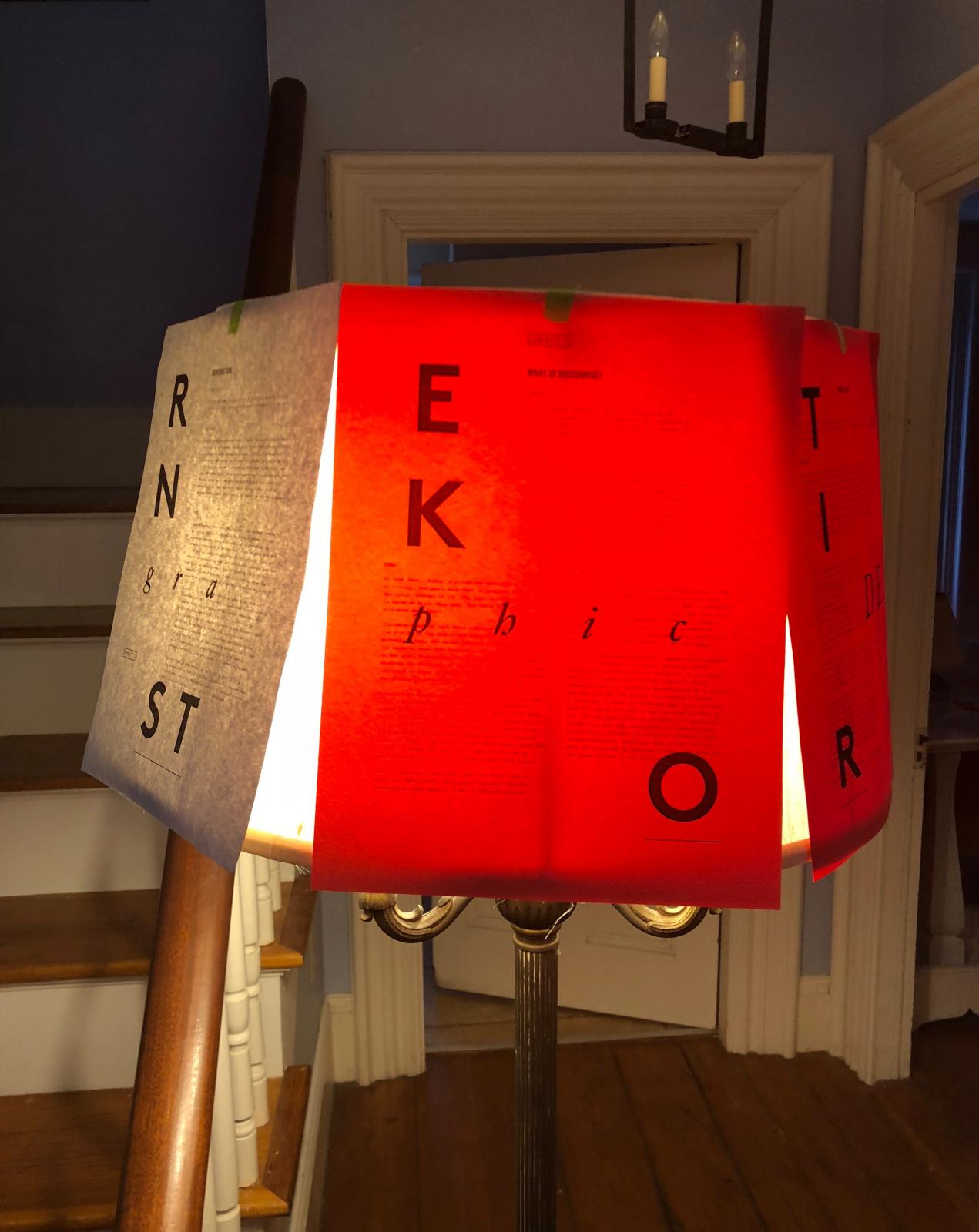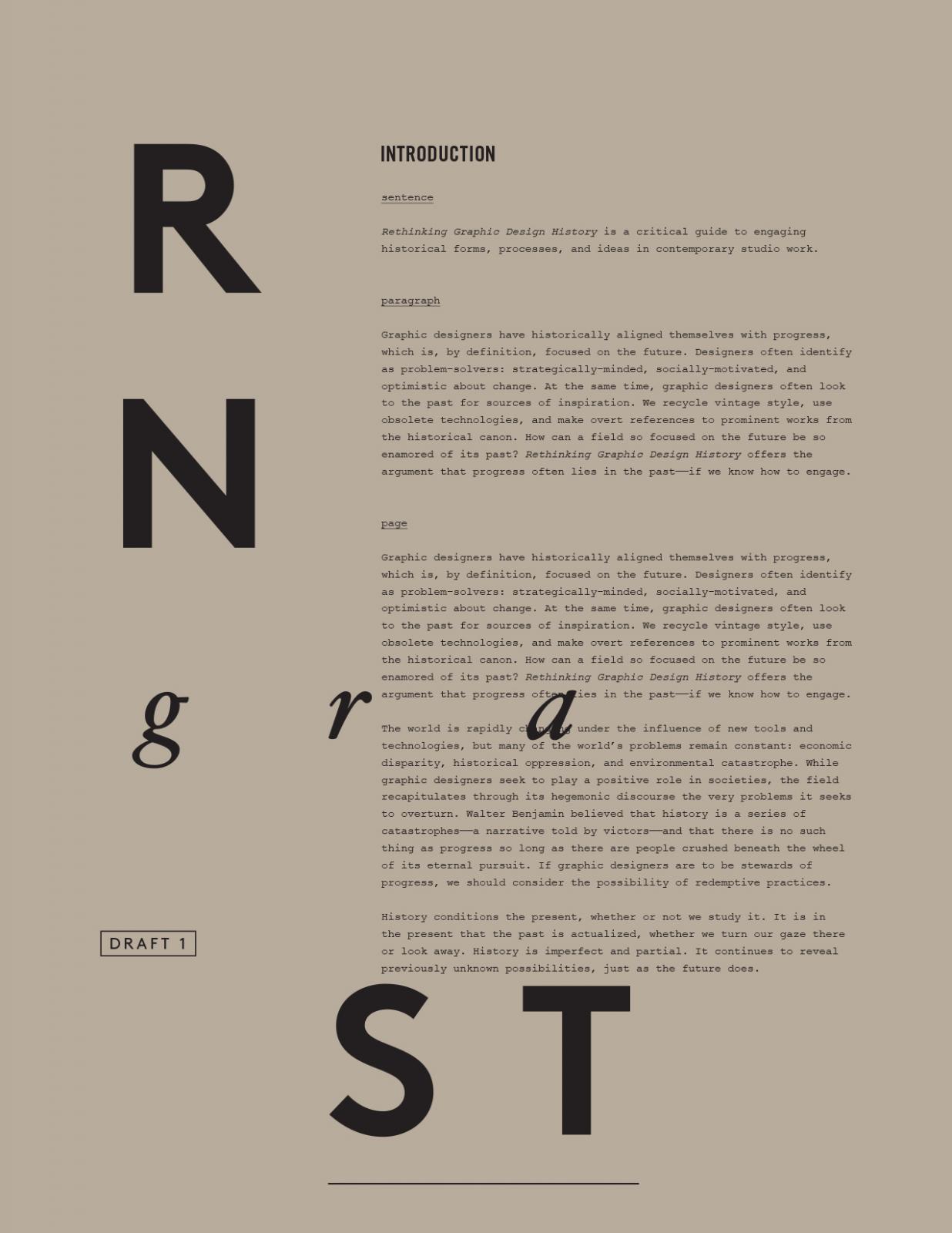Rethinking Graphic Design History
Aggie Toppins

Graphic designers have historically aligned themselves with progress, which is, by definition, focused on the future. We have often described ourselves as problem-solvers: strategically-minded, socially-motivated, and optimistic about change. At the same time, graphic designers often look to the past for sources of inspiration. We recycle vintage style, use obsolete technologies, and make overt references to prominent works from the historical canon. How can a field so focused on the future be so enamored of its past?
At DesignInquiry, I relied on the input of the group to get feedback on my long-term project, Rethinking Graphic Design History. I argue that progress, if there is such a thing, often lies in the past—in the overlooked, misunderstood, left-out objects of history—and in the re-articulating of established ideas.
History conditions the present, whether or not we study it. It is in the present that the past is actualized, whether we turn our gaze there or look away. History is imperfect and partial, like any narrative. It continues to reveal previously unknown possibilities, just as the future does.
Walter Benjamin saw history as a series of catastrophes—official narratives written by victors. He believed that there could be no such thing as progress so long as people fall beneath the wheel of its eternal pursuit. While graphic designers seek to play a positive role in the world, the field recapitulates the world’s problems. Design is often complicit with power. Its history and discourse are hegemonic. Rethinking Graphic Design History is my humble attempt at redemptive criticism.
I am asking questions (and analyzing projects and practices) that fall into four distinct categories:
Discourse
How does the evolution of discourse reveal conditions for “truth” within design? How do designers create or respond to archives? How might designers illuminate history’s oversights? How might we build new lineages of knowledge that are inclusive of the uncanonized past? How do we use reference to resist power?
Time
How does time conceived as a linear progression delimit practice? How might a perception of time as overlapping states unfetter design from the mandate of the new? How do designers defy the notion of obsolescence? How do we preserve long-standing cultural traditions as societies shift and change?
Memory
How do the intersections of individual and collective memories shape design? What opportunities lie in memory’s fallibility? How do designers perpetuate nostalgia? How is nostalgia linked to loss? How does reference interrogate modernity’s contradictions? How might collective memory serve as a point-of-reference for personal expression in design?
Signs
How do designers leverage the cultural connotations of historical style to solicit emotional responses? What is the difference between past and pastness? How are signs mobilized into relations that give rise to collective works?

